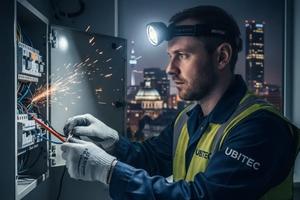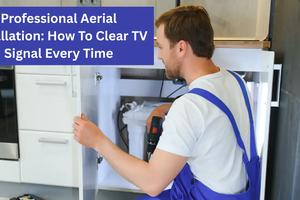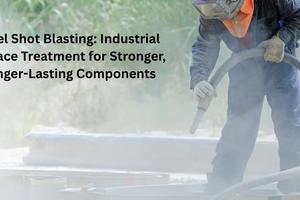Ultrasonic Level Indicators - Working Principles, Benefits & Applications - Accurate, Non-contact Measurement for Liquids And Solids

Key Takeaways
Essential insights to remember
Ultrasonic level indicators offer non-contact measurement, making them ideal for corrosive, sensitive, or hazardous materials.
These devices work by measuring the time it takes for ultrasonic pulses to bounce off a material's surface, providing accurate level readings.
Temperature, humidity, and surface conditions can affect measurement accuracy, but modern devices include compensation features.
Applications span numerous industries including water treatment, chemical processing, food manufacturing, and oil storage.
Proper installation and regular calibration are essential for maintaining measurement accuracy and reliability.
Introduction
Ultrasonic level indicators represent a pinnacle of non-invasive measurement technology, revolutionizing how industries monitor material levels with precision and reliability. These sophisticated devices measure the presence and quantity of liquids or solids in tanks, silos, and containers without making physical contact with the measured substance. Unlike traditional methods that require direct contact—potentially compromising both the sensor and the measured material—ultrasonic technology leverages sound wave propagation principles to deliver accurate measurements from a safe distance.
The fundamental appeal of ultrasonic level indicators lies in their versatility and adaptability across diverse industrial environments. From water treatment facilities monitoring reservoir levels to pharmaceutical companies ensuring precise ingredient proportions, these indicators have become indispensable tools in modern industrial automation and process control systems.
As industries increasingly prioritize efficiency, accuracy, and hygienic operations, ultrasonic level technology has emerged as a cornerstone solution for real-time monitoring and inventory management. The non-contact nature of these devices makes them particularly valuable for applications involving hazardous, corrosive, or sterile materials where contamination must be avoided at all costs.
How Ultrasonic Level Indicators Work
Ultrasonic level indicators operate on a remarkably elegant principle known as the "time-of-flight" or "echo-ranging" method. This sophisticated yet straightforward approach leverages the predictable behavior of sound waves traveling through air or gas to determine distance with exceptional precision.
Core Operating Principle 💡
The operational mechanism begins when the transmitter component—typically a piezoelectric transducer—emits high-frequency sound waves (generally between 20-200 kHz) that human ears cannot detect. These ultrasonic pulses travel through the air until they encounter an interface—usually the surface of the liquid or solid material being measured. Upon contact with this surface, the sound waves reflect back toward the sensor, creating what engineers call an "echo."
The device's timing circuit meticulously measures this round-trip journey:
Distance = (Speed of Sound × Time-of-Flight) ÷ 2
The division by two accounts for the sound traveling both to and from the target surface. The actual level measurement is then calculated by subtracting this distance from the known total height of the container:
Level = Total Container Height - Distance
Key Components of Ultrasonic Level Systems ⚙️
An ultrasonic level measurement system comprises several critical components:
- Transducer - Converts electrical energy to acoustic energy (and vice versa)
- Signal Processing Unit - Analyzes the returned signals and filters out noise
- Temperature Sensor - Compensates for variations in sound velocity
- Display/Output Interface - Presents readings and connects to control systems
- Mounting Hardware - Ensures proper positioning above the measured material
Signal Processing Techniques 📊
Modern ultrasonic level indicators employ sophisticated signal processing algorithms to overcome common challenges:
The GAP (Gain, Amplitude, Power) technology found in advanced models like the LST400 dynamically adjusts these parameters in real-time, enabling reliable measurements even in challenging environments with dust, foam, or turbulence—conditions that would render basic ultrasonic devices ineffective.
Understanding these fundamental operating principles provides crucial insight into selecting the appropriate ultrasonic level indicator for specific applications and interpreting their readings accurately.
Key Advantages of Ultrasonic Level Indicators
Ultrasonic level indicators have garnered widespread adoption across diverse industries due to their remarkable advantages over conventional measurement technologies. These benefits extend beyond mere convenience to deliver tangible improvements in operational efficiency, safety, and cost-effectiveness.
Non-Contact Measurement Benefits 🔄
Perhaps the most significant advantage of ultrasonic level indicators is their ability to measure without making physical contact with the target material. This contactless approach yields multiple benefits:
- Elimination of Contamination Risk - Particularly crucial in pharmaceutical and food processing applications where product purity is paramount
- Reduced Wear and Tear - No moving parts to degrade when exposed to abrasive or corrosive substances
- Extended Service Life - Without direct material contact, sensors can operate reliably for years with minimal maintenance
- Material Independence - Performance remains consistent regardless of material conductivity, unlike electrical methods
Accuracy and Reliability Factors ✓
Modern ultrasonic level indicators deliver impressive measurement precision across various conditions:
This dependability is particularly valuable in processes where precise inventory management or critical level monitoring is essential.
Economic and Practical Advantages 💰
The pragmatic benefits of ultrasonic technology translate to tangible cost savings and operational improvements:
Installation Simplicity 🔧
Ultrasonic level indicators typically mount on the top of containers, requiring minimal modification to existing infrastructure. This non-invasive installation means:
- No need to drain tanks or halt processes
- Reduced installation time and labor costs
- No potential leak points created in the vessel
- Simple retrofitting to existing containers
Maintenance Efficiency 🛠️
With few or no moving parts and no direct contact with potentially damaging materials, ultrasonic level indicators require minimal maintenance:
- No recalibration needed after initial setup in most applications
- No probes or floats to clean or replace
- Self-diagnostic capabilities in advanced models
- No specialized maintenance skills typically required
Versatility Across Applications 🌐
The adaptability of ultrasonic technology to diverse measurement scenarios provides unparalleled flexibility:
- Wide Measurement Range - Capable of measuring distances from a few centimeters to over 30 meters
- Material Versatility - Equally effective with liquids, slurries, and bulk solids
- Variable Container Compatibility - Functions in tanks of various shapes, sizes, and materials
- Challenging Substance Handling - Performs where other technologies fail, such as with sticky, corrosive, or variable-density materials
This constellation of advantages—non-invasive measurement, precision, durability, ease of use, and adaptability—explains why ultrasonic level indicators have become the gold standard in numerous industrial applications where reliable level measurement is critical.
Applications Across Industries
Ultrasonic level indicators have penetrated numerous industrial sectors, demonstrating remarkable versatility and adaptability to diverse operational environments. Their non-invasive measurement capabilities have made them indispensable tools across a spectrum of applications where precision monitoring is paramount.
Water Treatment and Management 💧
In the water and wastewater sector, ultrasonic level indicators have become fundamental components of efficient system management:
- Reservoir Monitoring - Tracking water levels in storage tanks and reservoirs with millimeter precision
- Chemical Dosing Control - Ensuring precise measurement of treatment chemicals for optimal water quality
- Pump Control Systems - Preventing dry-running and overflow conditions through automated level-based pump activation
- Flow Measurement - Calculating open channel flow rates in combination with flumes or weirs
The water industry particularly values the durability of ultrasonic systems in harsh environments with high humidity, chemical exposure, and potential flooding. Advanced models like the LST300 feature IP68 protection ratings specifically designed to withstand occasional submersion—a crucial fail-safe feature in wastewater applications.
Chemical Processing Plants ⚗️
The chemical industry presents unique challenges that ultrasonic level indicators are exceptionally equipped to handle:
Chemical facilities particularly benefit from PVDF-constructed sensors like those found in specialized models designed for chemical resistance. These sensors withstand exposure to acids, bases, and organic solvents that would rapidly degrade conventional measurement devices.
Food and Beverage Industry 🍽️
Hygiene requirements and regulatory compliance make ultrasonic technology particularly valuable in food production:
Liquid Ingredient Management
- Milk storage and processing
- Edible oil inventory control
- Beverage mixing and blending operations
- Syrup and liquid sweetener monitoring
Solid Material Handling
- Flour and sugar silo level measurement
- Grain and dry ingredient storage management
- Powdered milk and coffee granule inventory
Oil and Gas Storage Solutions ⛽
The petroleum industry relies on ultrasonic level indicators for critical applications:
- Tank Farm Management - Monitoring extensive arrays of storage tanks with centralized control systems
- Interface Detection - Identifying boundaries between different liquid layers (oil/water/emulsion)
- Custody Transfer - Providing accurate volume calculations for commercial transactions
- Leak Detection Systems - Contributing to environmental protection through precise inventory reconciliation
Specialized explosion-proof models with intrinsic safety certifications (FM, ATEX, IECEx) enable deployment in Zone 0 hazardous areas where flammable vapors may be present under normal operating conditions.
Additional Industrial Applications 🏭
Beyond these core sectors, ultrasonic level technology has proven valuable in:
- Pharmaceutical Manufacturing - Ensuring precise ingredient proportions and maintaining GMP compliance
- Mining Operations - Monitoring slurry levels and tailings dam management
- Paper and Pulp Production - Tracking chemical additives and pulp consistency
- Cement Manufacturing - Managing powder levels in silos and hoppers with high dust content
This impressive range of applications underscores the adaptability of ultrasonic level indicators to diverse industrial challenges—providing reliable, maintenance-free operation across environments where traditional measurement approaches would falter.
Selecting the Right Ultrasonic Level Indicator
Choosing the optimal ultrasonic level indicator for a specific application requires careful consideration of numerous factors. An informed selection process ensures maximum accuracy, reliability, and longevity while minimizing installation and maintenance challenges.
Key Specifications to Consider 📋
When evaluating ultrasonic level indicators, these critical parameters deserve primary attention:
- Measurement Range - The maximum distance the sensor can reliably measure
- Accuracy - Typical error margins expressed as a percentage of full scale or measured value
- Resolution - The smallest detectable change in level (often in millimeters)
- Beam Angle - The conical spread of the ultrasonic signal (narrower beams reduce interference)
- Response Time - How quickly the device updates measurements
- Output Options - Available signal formats (4-20mA, HART, relay contacts, etc.)
Range and Frequency Considerations 📊
The inverse relationship between measurement range and frequency represents a fundamental tradeoff in ultrasonic sensor selection:
This relationship exists because higher-frequency waves provide better resolution but attenuate more rapidly in air, limiting their effective range. As illustrated by models like the LST300 and LST400, manufacturers typically offer several transducer options optimized for different measurement ranges.
Environmental Factors Affecting Performance 🌡️
Ambient conditions can significantly impact measurement accuracy:
Temperature Effects
- Sound velocity varies approximately 0.17% per °C change in temperature
- Quality sensors include integrated temperature compensation
- Extreme temperature fluctuations may require specialized models with enhanced compensation algorithms
Pressure Influences
- Atmospheric pressure variations affect sound propagation
- Pressurized vessels require specialized sensor designs
- Vacuum applications present unique challenges requiring specific sensor types
Process Conditions
- Vapor, foam, or dust can attenuate signals
- Turbulent surfaces scatter ultrasonic waves
- Rapid level changes may require faster sampling rates
Application-Specific Selection Guidance 🔍
Different measurement scenarios demand tailored sensor characteristics:
For Liquid Applications:
- Standard transducers typically perform well on flat liquid surfaces
- Agitated liquids benefit from advanced echo processing algorithms
- Foam presence may require specialized "foam penetrating" models or alternative technologies
- Chemical compatibility of wetted parts demands careful consideration
For Bulk Solid Applications:
- Dust-penetrating capabilities become essential
- Wider beam angles help average irregular surface topography
- Stronger transmit power overcomes signal attenuation from particulates
- Specialized mounting considerations to avoid false echoes from internal structures
For Hazardous Environments:
- Intrinsic safety certifications for explosive atmospheres
- Appropriate ingress protection ratings for dust or moisture exposure
- Material compatibility with corrosive atmospheres
- Temperature ratings matching ambient extremes
Decision-Making Framework ⚖️
To systematize the selection process, consider this structured approach:
- Define Requirements - Establish measurement range, accuracy needs, and update frequency
- Assess Environment - Evaluate temperature range, presence of foam/dust, and compatibility concerns
- Consider Installation Constraints - Examine mounting options, power availability, and communication needs
- Evaluate Safety Requirements - Determine hazardous area classifications and regulatory compliance needs
- Calculate Total Cost of Ownership - Factor in initial cost, installation complexity, expected lifespan, and maintenance requirements
Following this methodical framework ensures the selected ultrasonic level indicator will provide optimal performance throughout its operational life, delivering accurate and reliable measurements while minimizing maintenance requirements and downtime.
Installation and Calibration Best Practices
Proper installation and calibration of ultrasonic level indicators are critical determinants of measurement accuracy and long-term reliability. Even the most sophisticated sensor will deliver suboptimal performance if incorrectly installed or improperly calibrated. Following industry best practices ensures optimal results from day one.
Mounting Considerations 🔧
The physical installation of an ultrasonic level indicator requires careful attention to several key factors:
Optimal Positioning
- Central Mounting - Install the sensor near the center of tanks or vessels whenever possible to avoid side walls and internal structures
- Minimum Distance from Walls - Maintain a clearance of at least 30cm (12in) from side walls to prevent interference from false echoes
- Clear Sound Path - Ensure the ultrasonic beam path remains unobstructed by internal elements like ladders, heating coils, or filling pipes
- Perpendicular Alignment - Mount the sensor precisely perpendicular to the material surface for maximum echo return strength
Mounting Hardware Selection
Choosing appropriate mounting hardware significantly impacts measurement stability:
Initial Setup Procedures 🚀
Following physical installation, these steps ensure proper configuration:
Dead Band Configuration
The "dead band" or "blanking distance" represents the minimum measurement range directly in front of the sensor where measurements are unreliable:
- Set the dead band value slightly larger than manufacturer specifications (typically 25-50cm)
- Account for potential mounting hardware that might create false echoes
- Consider temperature fluctuations that may affect this zone
Range Setting
Properly defining measurement parameters:
- Configure the "empty" distance (maximum range) based on actual tank dimensions
- Set the "full" level to correspond with maximum desired fill level
- For irregular containers, consider volume linearization for accurate volume calculations
- Program appropriate fail-safe behaviors for echo loss conditions
Echo Profile Analysis
Many modern ultrasonic level indicators provide echo profile visualization tools that display the strength and position of all detected echoes. This powerful diagnostic feature allows technicians to:
- Identify and map false echoes from internal structures
- Verify signal strength at various distances
- Optimize gain settings for specific applications
- Document baseline performance for future troubleshooting
Static and Dynamic Calibration Processes ⚙️
Calibration ensures the sensor provides accurate readings across its entire measurement range. The process typically involves:
Static Calibration
Static calibration verifies measurement accuracy at fixed points:
- Empty Calibration - With the vessel empty, confirm the sensor correctly measures the maximum distance
- Span Check - Verify measurements at multiple fixed points (typically 25%, 50%, and 75% of range)
- Full Calibration - Confirm accuracy at the minimum measurement distance (maximum fill level)
- Linearity Verification - Check that measurements between calibration points follow expected linear response
Dynamic Calibration
For applications with moving or changing surfaces:
- Test performance during actual filling and emptying cycles
- Verify response time to rapid level changes
- Confirm measurement stability with surface agitation or turbulence
- Validate temperature compensation during actual temperature variations
Documentation and Maintenance Planning 📝
Completing the installation and calibration process should include:
- Detailed documentation of all configuration parameters
- Baseline echo profiles for future comparison
- Standard operating procedures for routine verification
- Scheduled maintenance based on environmental conditions
- Training materials for operational staff
Common Installation Pitfalls to Avoid ⚠️
Be vigilant against these frequent installation errors:
- Acoustic Coupling - Mounting sensors directly on vibrating structures without isolation
- Beam Obstruction - Failing to account for internal structures that may enter the beam path
- Foam Ignorance - Underestimating the impact of foam formation on measurement reliability
- Temperature Gradient Neglect - Ignoring significant temperature stratification in the vapor space
- Cable Routing Issues - Running signal cables parallel to high-voltage or variable frequency drive wiring
Adhering to these installation and calibration best practices ensures that ultrasonic level indicators will deliver their full potential for accuracy, reliability, and longevity—maximizing return on investment while minimizing maintenance requirements and measurement errors.
Common Challenges and Solutions
Even the most sophisticated ultrasonic level indicators can encounter operational challenges in real-world industrial environments. Understanding these potential obstacles and implementing effective solutions ensures consistent performance and measurement reliability across diverse applications.
Dealing with Environmental Interferences 🌪️
Various environmental factors can impede the optimal functioning of ultrasonic level sensors:
Temperature Fluctuations
Temperature variations directly impact the speed of sound, potentially causing measurement inaccuracies:
- Challenge: A 20°C temperature change alters sound velocity by approximately 3.5%, introducing significant measurement errors
- Solution: Advanced temperature compensation systems use integrated temperature sensors to automatically adjust calculations
- Implementation: Multi-point temperature measurement may be necessary in environments with severe thermal stratification
High Humidity and Condensation
Moisture-laden environments pose unique challenges:
- Challenge: Condensation forming on the sensor face can attenuate or block ultrasonic signals
- Solution: Self-cleaning sensor designs with hydrophobic coatings repel moisture buildup
- Advanced Approach: Heated sensor faces maintain temperatures above dew point to prevent condensation
Dusty Atmospheres
Particulate matter in the air can significantly degrade performance:
Troubleshooting Measurement Issues 🔍
When measurement problems occur, systematic diagnostic approaches help identify root causes:
Signal Loss Problems
Complete echo loss requires methodical investigation:
- Check Physical Obstructions - Verify nothing has entered the sound path
- Examine Surface Conditions - Assess for foam, turbulence, or other echo-dispersing conditions
- Evaluate Environmental Changes - Consider recent modifications to temperature, pressure, or atmosphere
- Inspect Sensor Face - Look for contamination, damage, or moisture
- Review Electrical Connections - Verify power supply stability and signal integrity
Accuracy Drift
Gradually developing measurement discrepancies typically stem from:
- Material Buildup - Accumulation on the sensor face altering effective transmission distance
- Environmental Evolution - Gradual changes in vapor composition affecting sound velocity
- Component Aging - Electronic drift in timing circuits or transducer efficiency decline
- Mechanical Shifts - Subtle changes in mounting angle or position due to vibration or thermal expansion
Overcoming Limitations in Various Applications 🚧
Different applications present unique challenges requiring specialized approaches:
Foam Management Strategies
Foam on liquid surfaces represents one of the most common challenges for ultrasonic measurement:
- Low-Density Foam: Implement stronger transmission power and specialized algorithms that detect the liquid interface beneath thin foam layers
- Persistent Foam: Consider foam-penetrating frequencies or alternative technologies like guided wave radar for extreme cases
- Intermittent Foam: Program averaging algorithms that distinguish between foam-induced readings and actual level changes
Turbulent Surface Solutions
Surface agitation disperses ultrasonic signals, weakening echo returns:
- Signal Averaging - Extended sampling periods smooth fluctuations from wave action
- Stilling Wells - Physical dampening structures isolate measurement zones from turbulence
- Echo Tracking Algorithms - Smart filtering distinguishes true level changes from surface oscillations
Narrow Installation Constraints
Limited mounting options in constrained spaces require creative solutions:
- Focused Beam Transducers - Specialized sensors with narrower beam angles prevent side-wall interference
- False Echo Mapping - Programming the sensor to ignore reflections from known structural elements
- Custom Waveguides - Purpose-designed tubes that channel ultrasonic signals through constrained spaces
Adaptive Technologies for Challenging Environments 🔄
The latest advancements address historically difficult applications:
Multi-Echo Processing
Rather than relying on a single return signal, advanced systems evaluate multiple echoes:
- Intelligent algorithms distinguish between true surface echoes and false returns
- Statistical processing identifies the most reliable measurement among multiple candidates
- Pattern recognition techniques track consistent echo signatures amid changing conditions
Dynamic Parameter Adjustment
Self-optimizing systems that continuously adapt to changing conditions:
- Automatic gain control adjusts signal strength based on return echo intensity
- Variable frequency shifting optimizes penetration through different atmospheric conditions
- Adaptive sampling rates increase during periods of rapid level change
By understanding these common challenges and implementing the appropriate solutions, operators can maximize the effectiveness of ultrasonic level measurement technology even in the most demanding industrial environments. This proactive approach transforms potential limitations into manageable variables, ensuring consistent measurement reliability.
Advanced Features and Technology Trends
The landscape of ultrasonic level measurement continues to evolve rapidly, with manufacturers integrating cutting-edge technologies to enhance performance, expand functionality, and address previously insurmountable measurement challenges. These innovations are transforming ultrasonic devices from simple level indicators into comprehensive process management solutions.
Smart Monitoring Capabilities 🧠
Modern ultrasonic level indicators increasingly incorporate intelligent features that extend their utility far beyond basic distance measurement:
Predictive Diagnostics
Self-monitoring capabilities proactively identify potential issues:
- Performance Trend Analysis - Continuous evaluation of signal strength and quality to predict future failures
- Self-Validation Routines - Automated testing sequences that verify sensor accuracy against internal references
- Component Health Monitoring - Electronic surveillance of critical components with early warning alerts
Environmental Compensation Tracking - Documentation of compensation adjustments to identify gradual changes
Advanced Signal Processing
Computational algorithms dramatically improve measurement reliability in challenging conditions:
- Machine Learning Filters - Adaptive algorithms that learn to distinguish true echoes from false returns
- Multiple Echo Tracking - Simultaneous monitoring of several potential surface echoes with confidence scoring
- Mixed Algorithm Approach - Combining time-of-flight with amplitude analysis for enhanced accuracy
- Surface Profiling - Creating three-dimensional maps of irregular surfaces for precise volume calculation
Wireless Connectivity and IoT Integration 📡
Connectivity has revolutionized how ultrasonic level data is collected, analyzed, and utilized:
Wireless Communication Protocols
Multiple connectivity options support diverse implementation needs:
- HART Protocol - Industry-standard digital communication overlaid on 4-20mA signals
- Bluetooth Configuration - Secure short-range connectivity for setup and diagnostics
- LoRaWAN Integration - Long-range, low-power networking for remote installations
- Industrial WiFi - High-bandwidth connections for data-intensive applications
Cloud-Based Monitoring and Analytics
Remote access and advanced analysis transform data into actionable intelligence:
- Real-Time Dashboards - Customizable visualization of current and historical levels
- Predictive Inventory Management - Automated reordering based on consumption patterns
- Cross-Site Comparison - Benchmarking performance across multiple installations
- Mobile Alerting - Instant notification of critical conditions to relevant personnel
Multifunctional Capabilities 🔄
Contemporary ultrasonic level indicators increasingly incorporate additional measurement capabilities:
Integrated Multi-Parameter Sensing
Single devices providing multiple measurement functions:
- Temperature Profiling - Multiple temperature sensors providing stratification data
- Flow Calculation - Combining level measurements with weir or flume algorithms for open-channel flow monitoring
- Density Estimation - Advanced acoustic analysis providing insights into material composition
- Interface Detection - Identifying boundaries between different liquid phases
Process Control Integration
Direct control capabilities eliminate the need for separate control systems in many applications:
- Pump Control Logic - Built-in algorithms for efficient pump cycling and management
- Multi-Point Alarming - Configurable warning and critical alerts with hysteresis
- Batch Control Functions - Automated filling and emptying sequences with precise volume control
- Anti-Overflow Protection - Independent safety circuits providing redundant high-level protection
Future Developments in Ultrasonic Level Measurement 🔮
Several promising technologies are poised to further transform the capabilities of ultrasonic level indicators:
Array-Based Transducers
Multiple-element transducer arrays offer revolutionary possibilities:
- Beam Steering - Electronically directing the ultrasonic beam to avoid obstacles
- 3D Mapping - Creating detailed surface topography of irregular bulk materials
- Sector Scanning - Wide-area coverage with a single sensor installation
- Intelligent Focusing - Dynamically optimizing beam patterns for specific measurement conditions
Advanced Materials Science
New transducer materials are expanding performance boundaries:
- High-Temperature Piezoelectrics - Enabling direct measurement in environments up to 200°C
- Nano-Structured Composites - Improving sensitivity and signal-to-noise ratios
- Self-Cleaning Surfaces - Biomimetic materials that actively repel contaminants
- Vibration-Resistant Mounting - Composite materials that dampen mechanical interference
AI-Enhanced Measurement
Artificial intelligence is beginning to revolutionize measurement reliability:
- Cognitive Signal Processing - AI systems that understand the physical context of measurements
- Anomaly Detection - Identifying unusual patterns indicating process problems
- Adaptive Optimization - Self-tuning parameters based on historical performance
- Virtual Sensing - Inferring additional parameters from acoustic signatures
These advanced features and emerging technologies are rapidly expanding the capabilities and applications of ultrasonic level measurement, transforming these devices from simple distance sensors into comprehensive process intelligence platforms. As these innovations mature and become more accessible, ultrasonic technology will continue to strengthen its position as the preferred solution for non-contact level measurement across industrial applications.
Conclusion
Ultrasonic level indicators represent a remarkable confluence of acoustic physics, electronic engineering, and industrial automation principles. These versatile devices have revolutionized level measurement across numerous industries by offering non-contact, reliable monitoring solutions for both liquids and solids. From simple tank level monitoring to sophisticated process control integration, ultrasonic technology has proven its exceptional value through consistent performance even in challenging industrial environments.
The fundamental operating principle—measuring the time-of-flight of sound waves—provides an elegant solution that eliminates many complications associated with traditional contact-based measurement approaches. This contactless methodology delivers particular benefits in applications involving corrosive, hazardous, or hygienic materials where minimizing contamination or sensor degradation is essential.
Key advantages that have driven widespread adoption include:
- Non-contact measurement eliminating wear, contamination, and material compatibility concerns
- Exceptional accuracy and reliability with advanced compensation for environmental variables
- Minimal maintenance requirements resulting in lower total cost of ownership
- Versatility across diverse materials from clear liquids to powders and bulk solids
- Simple installation and configuration procedures compared to many alternatives
As industrial processes continue their digital transformation journey, ultrasonic level indicators have evolved accordingly—incorporating advanced signal processing, wireless connectivity, and sophisticated diagnostics. These enhancements have expanded their utility from simple measurement devices to comprehensive process management tools that provide critical operational intelligence.
The technology continues to advance rapidly, with emerging innovations addressing historical limitations and opening new application possibilities. Future developments in transducer materials, signal processing algorithms, and artificial intelligence integration promise even greater accuracy, reliability, and functionality in coming generations of devices.
For industries seeking precise, reliable level measurement without the complications of mechanical floats, pressure sensors, or conductive probes, ultrasonic level indicators represent a mature, field-proven technology that delivers exceptional performance across diverse applications. Their continued evolution ensures they will remain at the forefront of industrial measurement technology for decades to come.





